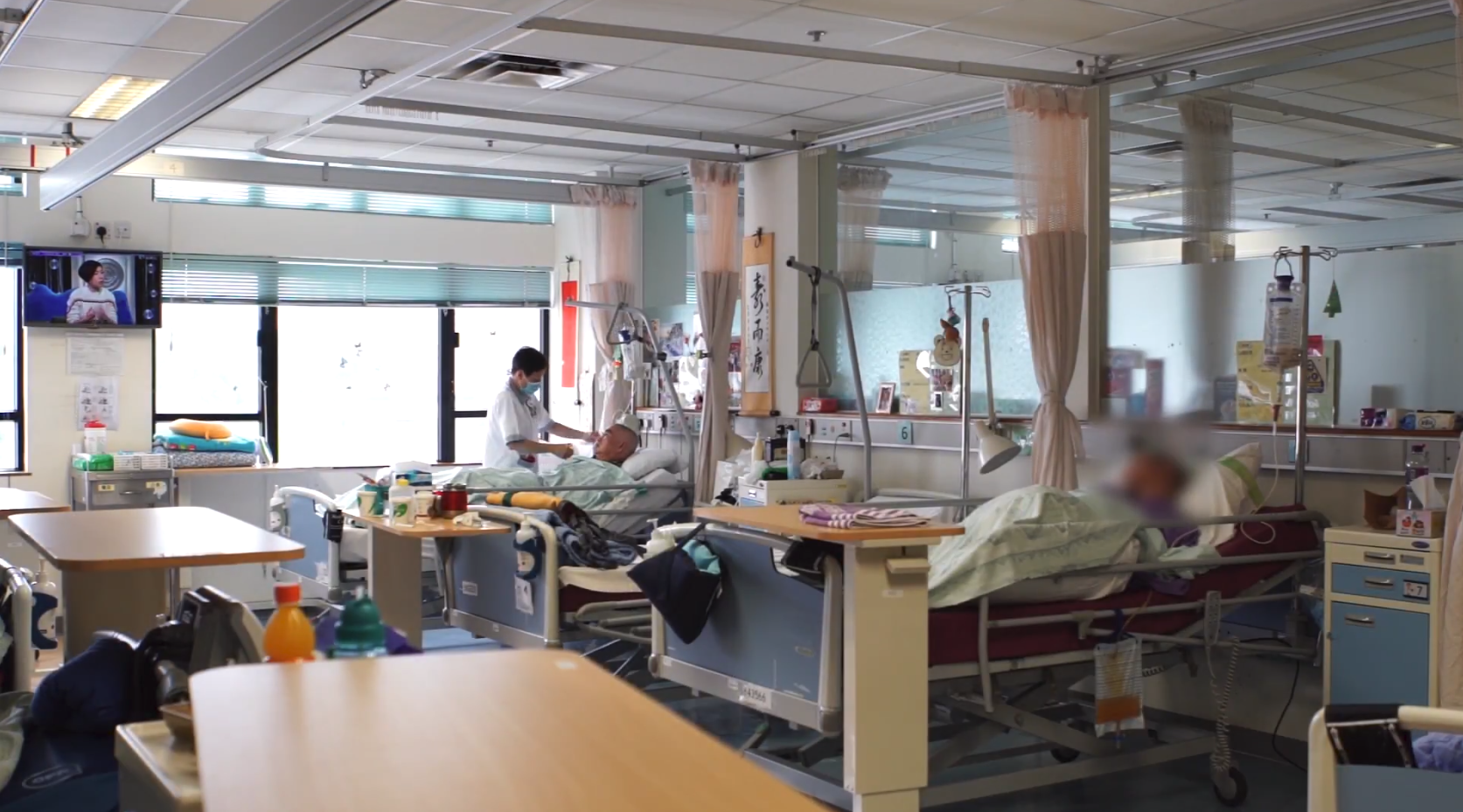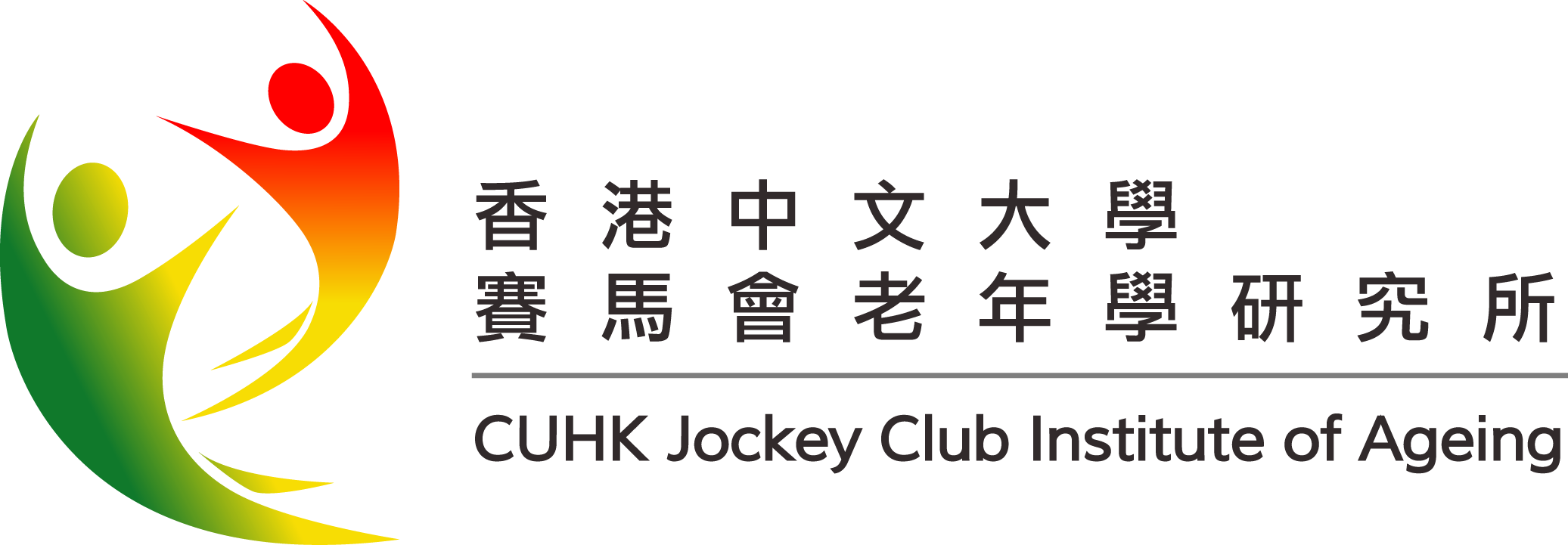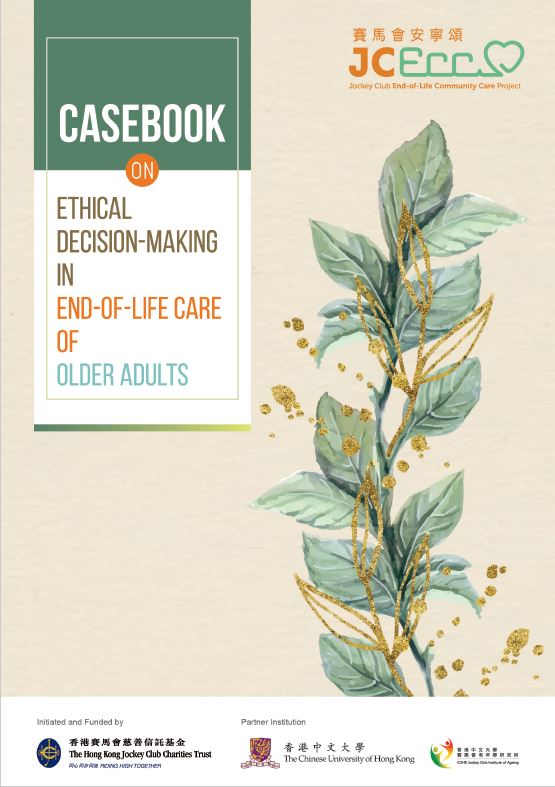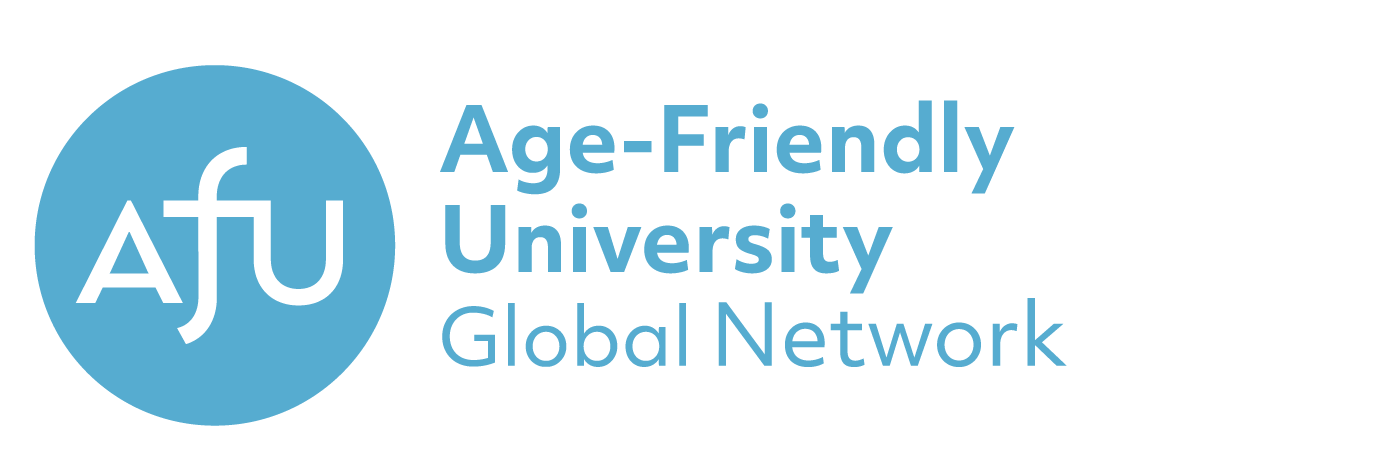HOME
JCECC Capacity Building and Education Programmes on End-of-Life Care
Casebook on Ethical Decision-Making in End-of-Life Care
of Older Adults
Introduction
This Casebook provides an open-access online resource for doctors, nurses, social workers and allied health professionals who face ethical issues when caring for older adults at the end of life. The cases are selected in consultation with healthcare and social care professionals serving older adults in hospitals, clinics, and the community that present common, yet challenging ethical situations that arise in Hong Kong. An expert commentary for each case provides a perspective on the ethical challenges and a practical clinical approach. Background readings on key topics in end-of-life care of older adults and additional resources are also provided. The Casebook will continue to be updated with additional cases and background readings over time.
The Casebook is developed under the Jockey Club End-of-Life Community Care Project (JCECC) in collaboration with the CUHK Centre for Bioethics. The idea for this Casebook stems from the Singapore Bioethics Casebook Project at the NUS Yong Loo Lin School of Medicine, which provides an online resource for healthcare professionals in tackling ethical issues that arise in care settings in Singapore. We developed this Casebook with the same intention to support healthcare providers practicing in Hong Kong with locally contextualized perspectives and insights.
While the cases that appear in the Casebook are based on real-life scenarios, all characters' names and other descriptions and events are modified and no identifying information of any individuals is provided.
|
Initiated and Edited by  Partner Institution  For enquiry, please email to This email address is being protected from spambots. You need JavaScript enabled to view it. |
|
|
Casebook Pamphlets (Published in November 2019)  click to download |
Case: Mr Lau
Conflict between team members
Mr. Lau is an 89-year-old long-term resident at a home for the aged. He started living at the home about 8 years ago after he was hospitalized for a stroke resulting in right-sided weakness and became wheelchair bound. He was never married and has two sisters who visit him every now and then.
Two weeks ago, Mr. Lau was admitted to the hospital after falling from his wheelchair and broke his hip. He was admitted to the orthopaedics ward. Dr. Shan, the orthopaedic consultant felt he was not a surgical candidate for hip replacement due to his poor underlying health status and he was already wheelchair-bound. Over the next few days, Mr. Lau developed a fever and cough, and was diagnosed with pneumonia. Despite being treated with antibiotics, his respiratory status worsened. He struggled to maintain oxygenation despite being on the maximum amount of oxygen that can be delivered to his face mask.
Given his deteriorating condition, the orthopaedics medical officer, Dr. Lo, phoned Mr. Lau’s sisters and explained: “Your brother has a serious pneumonia. If we don't connect him to a breathing machine soon, he will soon die.” His sisters agreed with inserting a breathing tube, and Mr. Lau was connected to a ventilator. A feeding tube was inserted and tube feeds were initiated.
Dr. Hong is the intern who has been caring for Mr. Lau over these past few weeks in the hospital. Now that Mr. Lau is on the breathing machine, Dr. Hong was distressed at doing repeated arterial blood draws on the patient to monitor Mr. Lau's blood gases because of the pain the procedure caused. Both his arms were badly bruised from the frequent blood draws. He felt that keeping Mr. Lau alive on the ventilator was torturing the patient. He did not think that his senior Dr. Lo had a proper informed discussion about the risks and benefits of the treatments with his family.
Fortunately, after a week on the ventilator, Mr. Lau’s respiratory status improved, and he was successfully extubated.
A day later, however, Mr. Lau was having more difficulty breathing again. Dr. Lo spoke with the consultant Dr. Shan who agreed with re-intubating the patient. He then told Dr. Hong to call the anesthesiologist to come to perform the intubation. Dr. Hong became concerned that putting Mr. Lau back on the ventilator would be futile treatment since he is unlikely to leave the hospital alive and it would only serve to prolong his dying and increase his suffering. He is uncertain whether or not to follow his senior’s orders to call the anesthesiologist.
---------------------------------------------------------------------------------------------------------------
Themes: Moral distress, futility, conflict between team members, informed consent, life-sustaining treatment
- Dr. Tse Chun Yan, Chairman, HA Clinical Ethics Committee (2005 to 2017)
Dr. Hong was concerned that further intubation and mechanical ventilation would be futile and not in the best interests of the patient. Whether this view is appropriate would depend on the following factors:
|
If, after considering the above factors, Dr. Hong considers that re-intubation would be futile and not in the best interests of the patient, it would be proper that he does not simply follow the instruction of his senior without question. Dr. Hong has an ethical duty to exercise his own independent professional judgment and to act in the patient's best interests.
It would be appropriate to discuss further with his seniors, to raise his views and to suggest seeking a second opinion from a relevant specialist. Because what is in a patient's best interests is often a value-laden decision, in making the decision, it is useful to build consensus with the patient and his family members and among members of healthcare team, taking into account views from different perspectives.
If consensus cannot be reached within the healthcare team, if time allows, the clinical ethics committee of the hospital can be consulted. Another alternative is to consider a time-limited trial of treatment. The healthcare team should work out with the patient and family a well-defined set of therapeutic goals and end points and a well-defined period of trial time. If no progress is made towards the agreed therapeutic goals at the end of the trial period, decision can be jointly made to withdraw the life sustaining treatment.
個案:劉先生
醫護團隊的意見分歧
劉先生89歲,八年前中風入院,繼而右邊肢體無力,需要坐輪椅,自此長期居住老人院。劉先生未婚,兩個姊妹不時探訪他。
兩星期前,劉先生從輪椅墜地,導致髖部骨折需要入住骨科病房。由於他本身健康欠佳,而且已經需要坐輪椅,骨科顧問醫生單醫生認為劉先生不適合接受髖關節置換手術。之後數天,劉先生開始發燒、咳嗽,並確診患上肺炎。劉先生即使服用抗生素,呼吸系統的情況依然惡化;即使已經透過氧氣罩提供最高量的氧氣,他仍然呼吸困難,引致呼吸急促。
鑑於劉先生身體狀況每況愈下,骨科醫生盧醫生致電劉先生的姊妹解釋:「劉先生患有嚴重肺炎。如果不盡快接駁呼吸機,劉先生剩下的日子不多。」姊妹同意為劉先生插呼吸管和將他接駁至呼吸機。醫護人員將餵飼管插入劉先生內,開始用餵飼管為他餵食。
實習醫生洪醫生過去數星期於醫院照顧劉先生,眼見劉先生使用呼吸機,自己又不時因監察血液氣體而向劉先生進行動脈抽血,令他感到痛苦而心疼。劉先生因經常抽血,導致雙手一片瘀傷。洪醫生認為用呼吸機維持劉先生的生命等同虐待病人,而上級盧醫生未有恰當地與病人家屬討論治療方案的好處及風險。
幸好,劉先生使用呼吸機一星期後,呼吸系統情況好轉,可以移除呼吸管。
然而,一天後,劉先生再次呼吸困難。盧醫生與顧問單醫生討論病情,單醫生同意重新接駁呼吸機。盧醫生吩咐洪醫生聯絡麻醉科醫生,接駁喉管。洪醫生認為劉先生不大可能再次離開醫院,使用呼吸機只會延長劉先生死亡的過程,令他更痛苦,擔心再次使用呼吸機只是徙然。洪醫生不知道應否聽從上級指示,聯絡麻醉科醫生。
----------------------------------------------------------------
主題:道德困擾、無效醫療、醫護團隊的意見分歧、知情同意、維持生命治療
醫院管理局臨床倫理委員會主席(2005至2017年)謝俊仁醫生撰寫
洪醫生擔心再次插喉及使用呼吸機只是徙然,非從病人的最佳利益出發。洪醫生的觀點正確與否,視乎以下因素:
|
如果洪醫生考慮過以上因素後,認為再次插喉只是徙然,對病人並非最佳利益,他拒絕只是遵從上級決定的指示,是適當的。洪醫生有倫理責任,依照自己的獨立專業判斷,以病人最佳利益來行事。
洪醫生可以選擇與上級更深入討論,提出自己意見,並建議諮詢相關專科醫生的意見。考慮病人最佳利益,往往牽涉價值取向。故此,與病人、病人家屬和醫療團隊各成員商討,考慮各方的想法,然後達成共識,會有助作出合適的抉擇。
如果醫療團隊成員之間無法達成共識,而時間又許可的話,可以諮詢醫院的臨床倫理委員會。另一方法是訂定時限,嘗試作出治療。醫療團隊應該與病人和病人家屬訂明治療目標、終止治療的條件與治療期限。如果治療期限前未能達成訂定的治療目標,各方可以一同決定撤去維持生命治療。
Case: Mr Chau
Disagreements over timing for advance care planning
Topic: Disagreements over timing for advance care planning
Case commentary and voice by: Dr. Derrick Au Kit Sing
Introduction: This video aims to discuss the clinical ethics case as a scenario of moral distress in which the healthcare professionals might be confronted with disagreements over timing for advance care planning.
00:11 Case description
05:58 Case commentary
06:20 How does the nurse Ms. Leung know that her suggestion is the right thing for the patient?
06:40 Was the doctor-in-charge Dr. Kam wrong?
07:22 Was the patient’s concern just about the BiPAP mask?
08:05 On moral distress
08:46 What can the nurse do?
09:21 Case commentary wrap up
Mr. Chau is a 75-year-old man who lives at home with his wife and his son's family. He was a former smoker and suffered from chronic obstructive pulmonary disease (COPD) for many years. Over the past year, he has become more easily short of breath with routine activities like walking around his home, dressing himself or taking a shower. He has also experienced more frequent exacerbations that led to several hospitalizations. In the last six months, he's already been admitted three times. Each time, he was put on a BiPAP machine for several days before his condition improved.
Last week, Mr. Chau was admitted again for another exacerbation of his COPD. After a week of treatment in the respiratory ward, he was finally able to come off the BiPAP mask. However, when the food tray was delivered to Mr. Chau, he pushed the food away. Ms. Leung, a registered nurse in the ward, saw this and recognized Mr. Chau from previous admissions. She approached Mr. Chau to ask why he didn't want the food.
Mr. Chau answered, "What's the point of eating? Just to keep coming back like this and be put on that mask? I'm as good as dead!"
Concerned, Ms. Leung asked Mr. Chau, "Is something wrong? I thought you'd be glad to come off the mask today."
Mr. Chau said, "Well, it's just temporary. I know how bad things are with my lungs. It's just a matter of time. I just don't want to go through the same ordeal over and over again, in and out of the hospital. Then one day, game over. If I'm going to die anyway, I don't want to be strapped to that mask up the final moment! You know how awful it is to be on the mask? You can't eat. You can't talk. It just blows air into your face!"
"It sounds like you're really concerned about being put on that mask again," Ms. Leung said.
"Yeah. I don't ever want to wear it again! Just let me go without making me suffer through all that! I've had enough!"
"Have you told your family how you feel?" asked Ms. Leung.
"I tried. But my wife and son...they won't listen. They don't want me to talk so negatively. They said that I should just listen to the doctor. The doctor barely even has time to talk to me!"
Feeling that Mr. Chau is probably correct about the advanced stage of his lung disease and that he's reasonable to prefer to be comfortable at this point, Ms. Leung decides to discuss Mr. Chau's concerns with Dr. Kam, the doctor-in-charge. She suggested that Dr. Kam should hold a family conference to explain his poor prognosis with his wife and son and to sign an advance directive for Mr. Chau.
However, Dr. Kam disagreed. "It's too premature to sign any advance directives and discuss end-of-life care issues. Mr. Chau's condition can still be relieved by the current treatments. He's ready for discharge soon!"
Ms. Leung felt powerless and does not know how she can help Mr. Chau.
---------------------------------------------------------------------------------------------------------------
Themes: advance care planning, advacnce directives, moral distress, life-sustaining treatment, conscientious objection
- Dr. Derrick Au Kit Sing, Director, CUHK Centre for Bioethics
We may discuss this case as a scenario of moral distress in which the nurse Ms. Leung felt powerless for being unable to do what she considered the right thing for the patient, as the doctor-in-charge held a strong opposite view on what was right.
Ms Leung's suggestion was to hold a family conference to explain the poor prognosis to the family, and to sign an advance directive for the patient.
Before considering her moral distress, it is useful to take a step back to ask a few questions:
|
How does Ms. Leung know that her suggestion is the right thing for the patient?
|
This may be a pragmatic approach to overcome a deadlock. One may argue that taking the pragmatic approach does not always work, and there may well be other scenarios where institutional constraint is undisputable and even unfair. In some circumstances, a healthcare professional may need to bring up the issue of concern to hospital management, or raise conscientious objection to unethical practice.
In this particular case, it would appear that there is room for further assessment of the patient, positive communication within the team, and dialogue with the patient's family.






